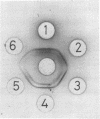Abstract
Clostridium botulinum type F progenitor toxin was purified to a homogeneous state as judged by gel filtration on Sephadex G-200, ultracentrifugation, and disc electrophoresis. The sedimentation constant, corrected to water at 20 C, of type F progenitor toxin was determined to be 10.3 and the molecular weight to be 235,000 by ultracentrifugation at pH 6.0. The purified toxin contained a toxicity of 1.2 × 108 50% lethal doses/mg of N. In agar gel double diffusion, it formed two precipitin lines at pH 6.0. The progenitor toxin of type F differs from that of type A in that it contains no hemagglutinin and from that of type E in that it is not activable.
Full text
PDF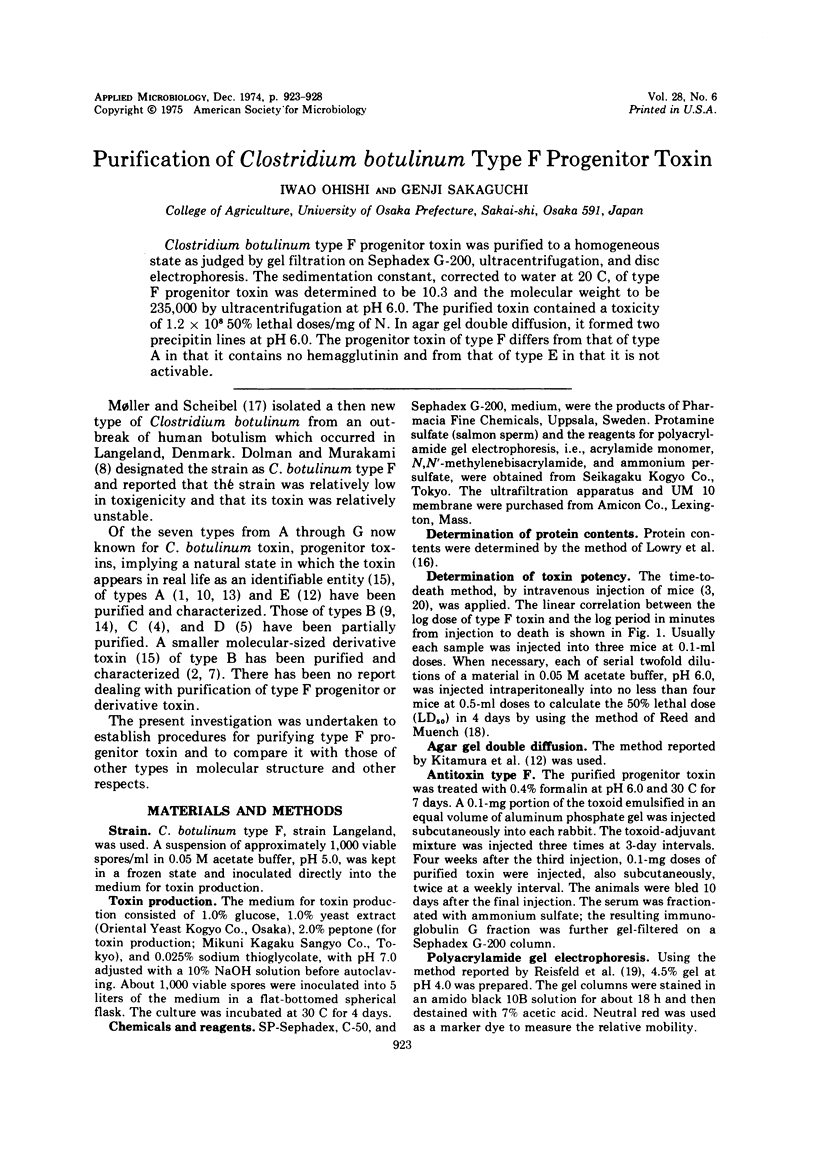
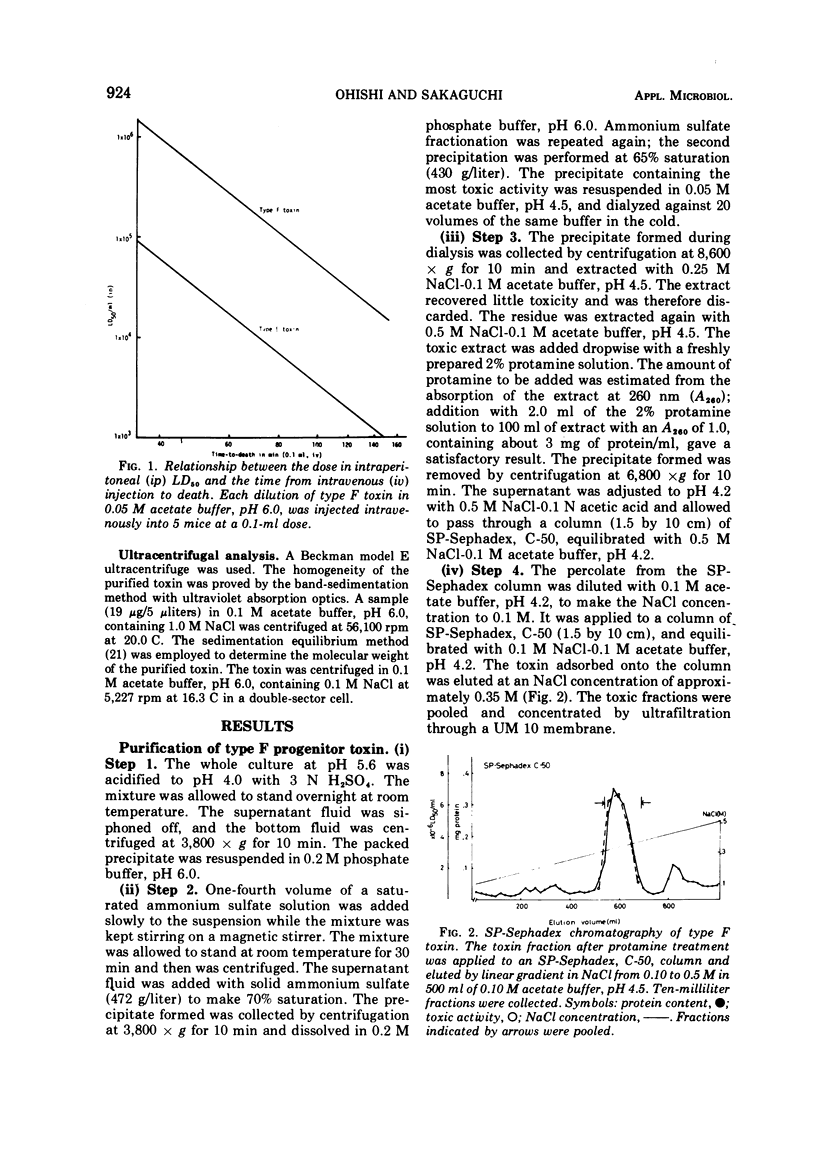
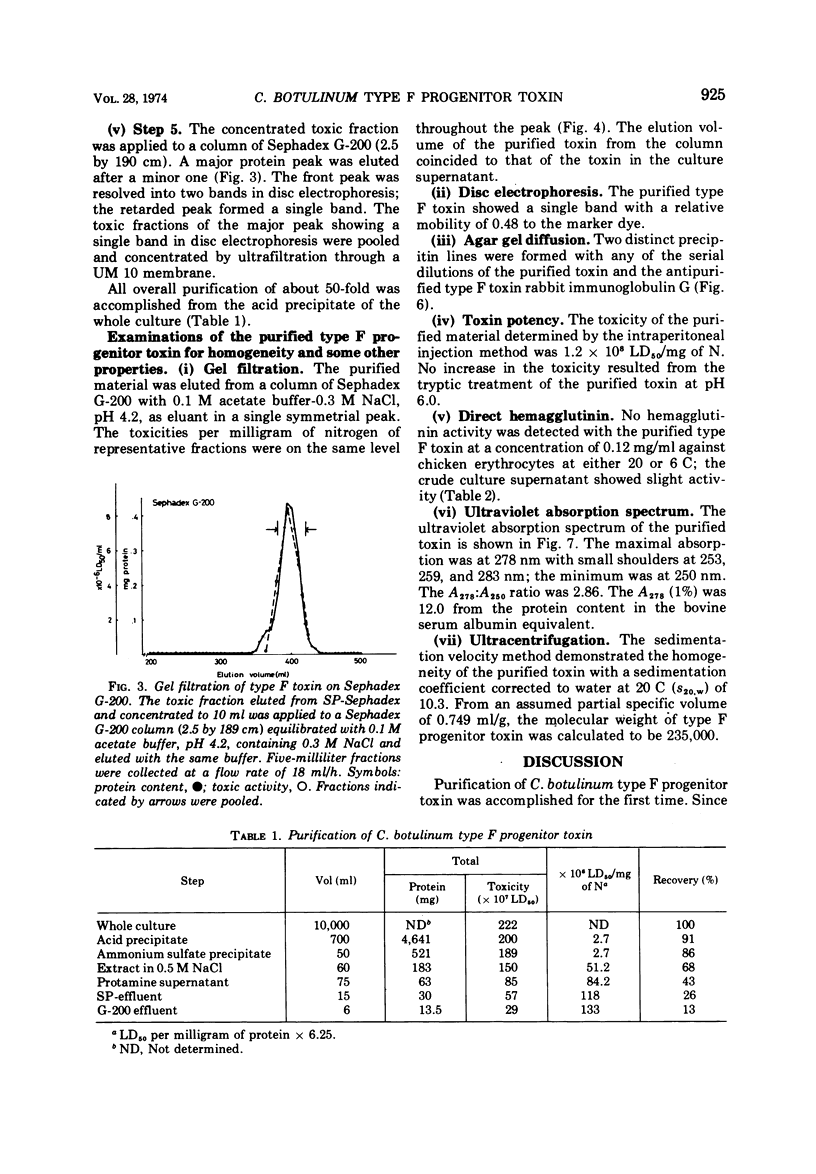
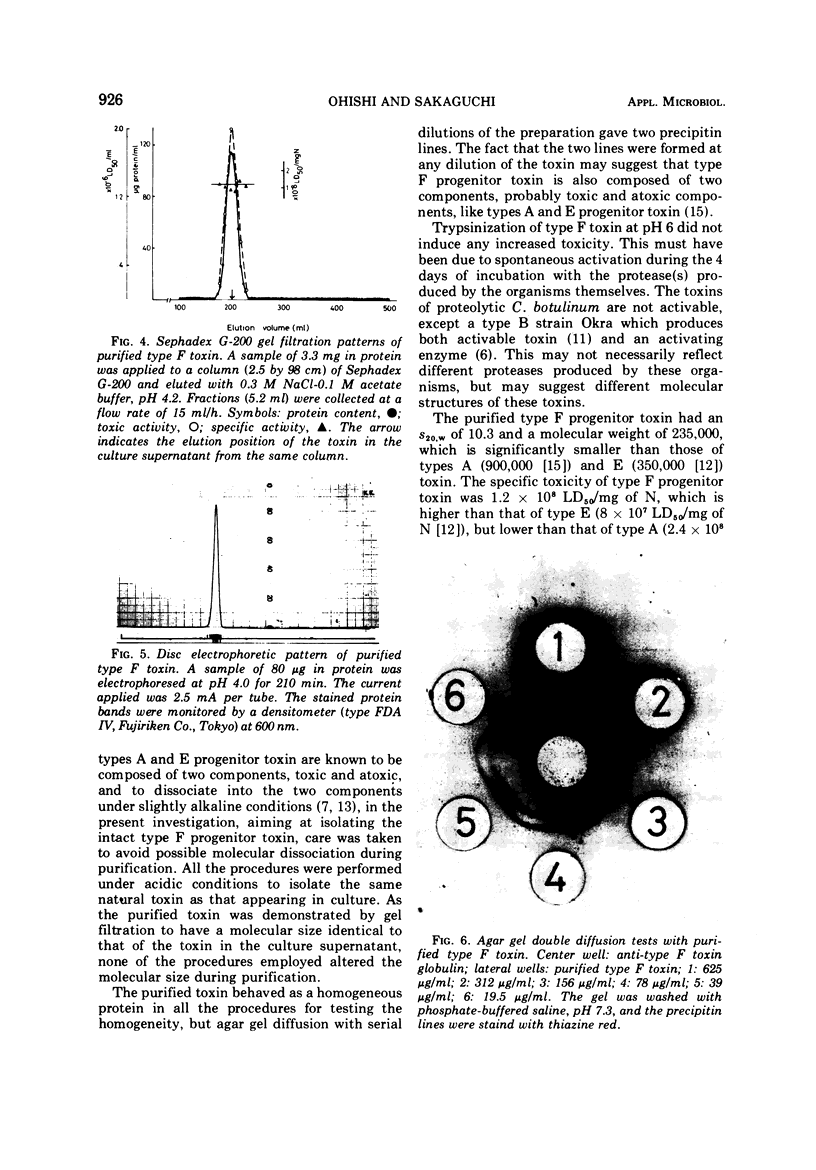
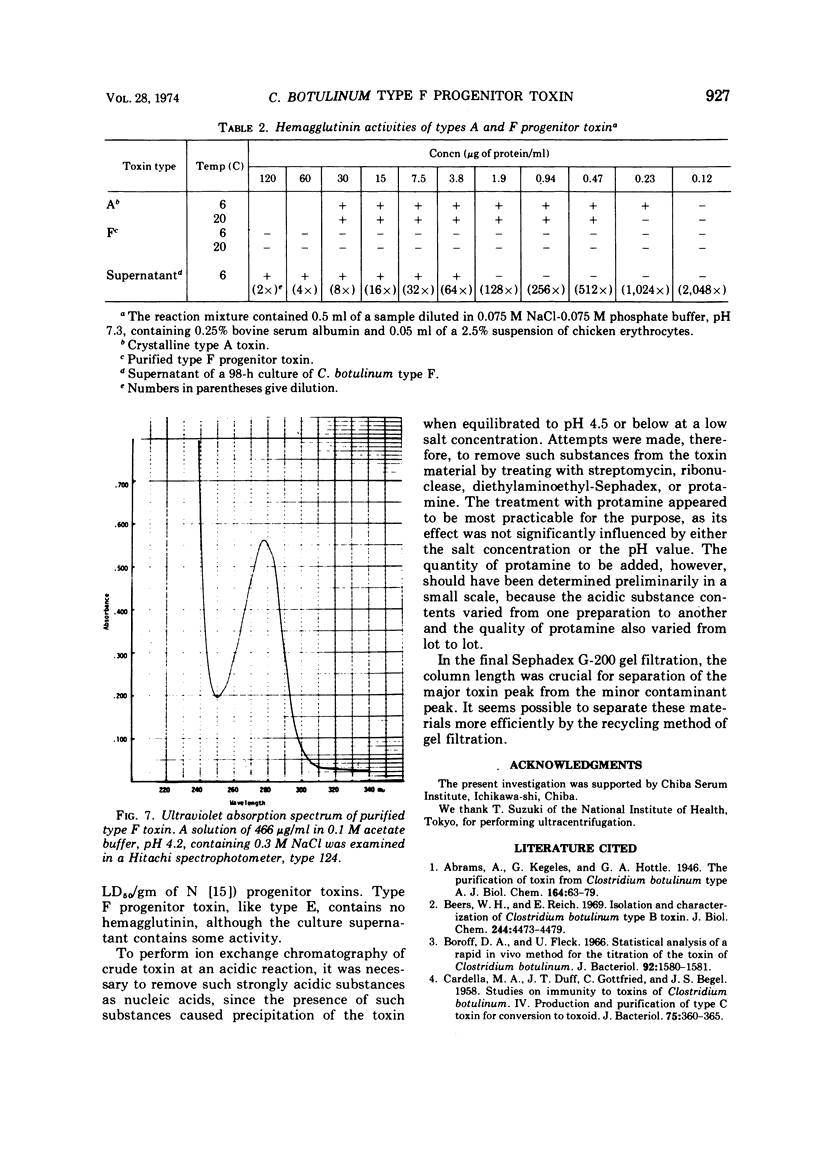
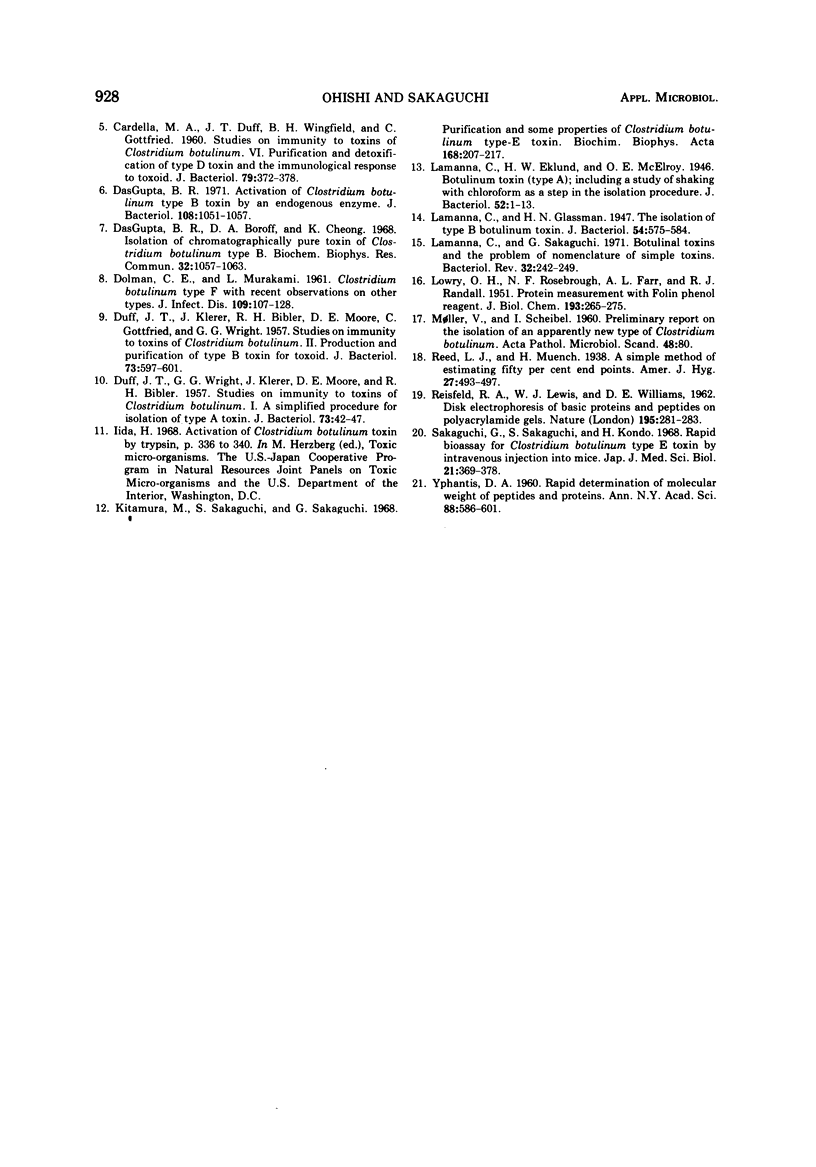
Images in this article
Selected References
These references are in PubMed. This may not be the complete list of references from this article.
- Beers W. H., Reich E. Isolation and characterization of Clostridium botulinum type B toxin. J Biol Chem. 1969 Aug 25;244(16):4473–4479. [PubMed] [Google Scholar]
- Boroff D. A., Fleck U. Statistical analysis of a rapid in vivo method for the titration of the toxin of Clostridium botulinum. J Bacteriol. 1966 Nov;92(5):1580–1581. doi: 10.1128/jb.92.5.1580-1581.1966. [DOI] [PMC free article] [PubMed] [Google Scholar]
- CARDELLA M. A., DUFF J. T., GOTTFRIED C., BEGEL J. S. Studies on immunity to toxins of Clostridium botulinum. IV. Production and purification of type C toxin for conversion to toxoid. J Bacteriol. 1958 Mar;75(3):360–365. doi: 10.1128/jb.75.3.360-365.1958. [DOI] [PMC free article] [PubMed] [Google Scholar]
- CARDELLA M. A., DUFF J. T., WINGFIELD B. H., GOTTFRIED C. Studies on immunity to toxins of Clostridium botulinum. VI. Purification and detoxification of type D toxin and the immunological response to toxoid. J Bacteriol. 1960 Mar;79:372–378. doi: 10.1128/jb.79.3.372-378.1960. [DOI] [PMC free article] [PubMed] [Google Scholar]
- DUFF J. T., KLERER J., BIBLER R. H., MOORE D. E., GOTTFRIED C., WRIGHT G. G. Studies on immunity to toxins of Clostridium botulinum. II. Production and purification of type B toxin for toxoid. J Bacteriol. 1957 May;73(5):597–601. doi: 10.1128/jb.73.5.597-601.1957. [DOI] [PMC free article] [PubMed] [Google Scholar]
- DUFF J. T., WRIGHT G. G., KLERER J., MOORE D. E., BIBLER R. H. Studies on immunity to toxins of Clostridium botulinum. I. A simplified procedure for isolation of type A toxin. J Bacteriol. 1957 Jan;73(1):42–47. doi: 10.1128/jb.73.1.42-47.1957. [DOI] [PMC free article] [PubMed] [Google Scholar]
- DasGupta B. R. Activation of Clostridium botulinum type B toxin by an endogenous enzyme. J Bacteriol. 1971 Dec;108(3):1051–1057. doi: 10.1128/jb.108.3.1051-1057.1971. [DOI] [PMC free article] [PubMed] [Google Scholar]
- DasGupta B. R., Boroff D. A., Cheong K. Isolation of chromatographically pure toxin of Clostridium botulinum type B. Biochem Biophys Res Commun. 1968 Sep 30;32(6):1057–1063. doi: 10.1016/0006-291x(68)90137-x. [DOI] [PubMed] [Google Scholar]
- Kitamura M., Sakaguchi S., Sakaguchi G. Purification and some properties of Clostridium botulinum type-E toxin. Biochim Biophys Acta. 1968 Oct 21;168(2):207–217. doi: 10.1016/0005-2795(68)90144-x. [DOI] [PubMed] [Google Scholar]
- LOWRY O. H., ROSEBROUGH N. J., FARR A. L., RANDALL R. J. Protein measurement with the Folin phenol reagent. J Biol Chem. 1951 Nov;193(1):265–275. [PubMed] [Google Scholar]
- Lamanna C., Eklund H. W., McElroy O. E. Botulinum Toxin (Type A); Including a Study of Shaking with Chloroform as a Step in the Isolation Procedure. J Bacteriol. 1946 Jul;52(1):1–13. [PMC free article] [PubMed] [Google Scholar]
- Lamanna C., Glassman H. N. The Isolation of Type B Botulinum Toxin. J Bacteriol. 1947 Nov;54(5):575–584. doi: 10.1128/jb.54.5.575-584.1947. [DOI] [PMC free article] [PubMed] [Google Scholar]
- Lamanna C., Sakaguchi G. Botulinal toxins and the problem of nomenclature of simple toxins. Bacteriol Rev. 1971 Sep;35(3):242–249. doi: 10.1128/br.35.3.242-249.1971. [DOI] [PMC free article] [PubMed] [Google Scholar]
- MOLLER V., SCHEIBEL I. Preliminary report on the isolation of an apparently new type of CI. botulinum. Acta Pathol Microbiol Scand. 1960;48:80–80. doi: 10.1111/j.1699-0463.1960.tb04741.x. [DOI] [PubMed] [Google Scholar]
- REISFELD R. A., LEWIS U. J., WILLIAMS D. E. Disk electrophoresis of basic proteins and peptides on polyacrylamide gels. Nature. 1962 Jul 21;195:281–283. doi: 10.1038/195281a0. [DOI] [PubMed] [Google Scholar]
- Sakaguchi G., Sakaguchi S., Kondo H. Rapid bioassay for Clostridium botulinum type-E toxins by intravenous injection into mice. Jpn J Med Sci Biol. 1968 Dec;21(6):369–378. doi: 10.7883/yoken1952.21.369. [DOI] [PubMed] [Google Scholar]
- YPHANSTIS D. A. Rapid determination of molecular weights of peptides and preteins. Ann N Y Acad Sci. 1960 Aug 31;88:586–601. doi: 10.1111/j.1749-6632.1960.tb20055.x. [DOI] [PubMed] [Google Scholar]



